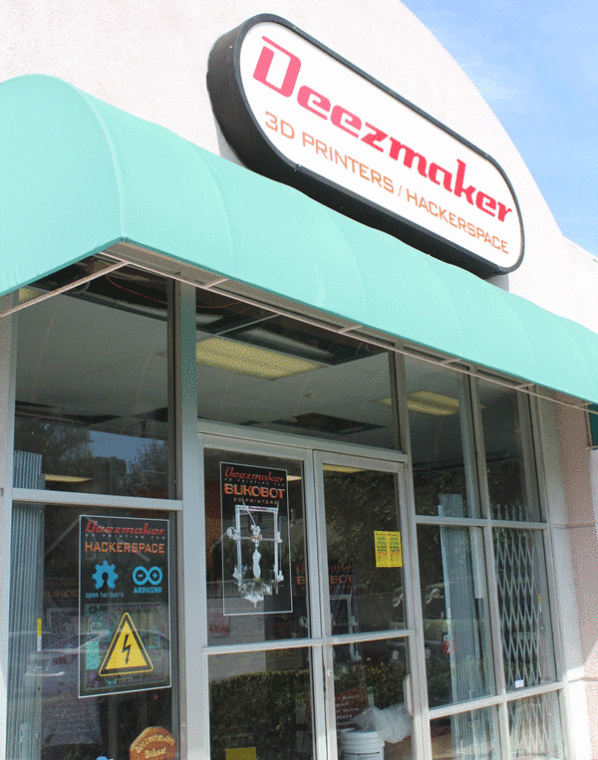
In preparation for the Maker Faire each season, the editors of MAKE have been divying up topical beats so we can cover more area. I’ve been covering the 3D printing beat, and thought I’d share some of the trends and technologies I’m seeing going into Maker Faire. Putting aside the IP, social, and political discussions that will surely be happening this year, below is a quick overview of how I see the “State of the Beat”.
If you have suggestions for other trending topics — or especially recommendations for people you’d like to see at Maker Faire — I’d love it if you could post in the comments.
1. The spread of tools and techniques for creating original models.
As more people get access to 3D printers, they’ll also have to climb the not-insignificant learning curve of 3D modeling tools and techniques. Some new and interesting tools include:
- OpenSCAD: an open source tool for constructive solid modeling (CSM). CSM is often a better technique for 3D printing than the more common mesh-based surface modeling because you can unequivocally say whether a point should contain a drop of plastic or not. As it turns out, OpenSCAD works well as a backend, and we’re seeing some tools built on top of it like OmNomNom Creator and the Makerbot Customizer.
- Makerbot Customizer: Created by Tony Buser, the Customizer is a really interesting step toward consumer-friendly 3D model distribution. It’s a parametric front end to a 3D model that is easy to use for both end users and model makers.
http://www.thingiverse.com/apps/customizer/ - ModelBuilder: Marius Watz created this Processing add on for algorithmically generating 3D models. Great for realizing your favorite mathematical oddity as a piece of jewelry.
- MeshMixer: A pretty simple 3D modeling and touch up tool.

2. Retail 3D printing/printer shops opening
3D printing storefronts are probably the only new type of retail I’ve heard about in a long time. Staples will be rolling out 3D printers in Europe this Spring (no US date?).
- Deezemaker: Bukobot creator Diego Porqueras’s shop is also a hackerspace.
- The Makerbot Retail Store opened this year, a few blocks from Soho no less.
- Paris now has a 3D printshop at Protoshop.
- 3DEA in NY: A temporary pop up shop; more like a gallery, but still a storefront.
3. Inexpensive scanning and 3D input devices that are actually usable
We’re not at the point yet where it is reasonable to duplicate real world objects the way we do sheets of paper or digital objects. One of the most interesting uses of 3D scanners now is in taking samples of the world, then incorporating those models into new objects. Scan that seashell, tweak it, then scale it up into the roof of an amphitheatre; that kind of thing.
- 123D Catch works surpsingly well in what is a pretty difficult application area. This seems to have become the standard, displacing other apps like Trimensional.
- On Windows you can use Kinect + ReconstructMe
- I imagine the Leap Motion will be a player in the 3D input device area.
Anna Kazuinas France’s Halloween treats started with a 3D scan of a skull.
4. More/more better printers and prints.
This was the theme of Maker Faire NY and I expect that to continue: more people making more and more better printers and prints.
- Deltabots: The Rostock was the only Deltabot at Maker Faire NY; I expect to see more this time around, like DeltaMaker.
- Adafruit has a new category for selling bearings, couplers, pulleys, etc. Could we see an Adafruit 3d printer someday? If not, certainly this will help more people get started with designing their own machines and mechanisms.
- Better electronics: A lot of the RepRap inventions are becoming slicker and slicker. Also, a lot of finer details of industrial firmware (like acceleration profiles) are making it into the hobbyist electronics. For example, Synthetos’ TinyG motor control system makes 3D printers move like Cylons:[youtube:http://www.youtube.com/watch?v=Om0wTqFA-Dw]
5. Inexpensive printers supporting new materials
Besides PLA and ABS plastics (and the photopolymer resins used by printers like the Form 1), we’ll be seeing hobby printers capable of printing more types of materials:
- Polycarbonate
- Nylon
- LAYWOO-D3 wood filament
- High impact polystyrene
- Better support materials
- Biomaterials (skin, bone, etc.)
- Carbomorph conductive resin
And then of course there’s the Holy Grail-like renewable promise of the Filabot Personal Filament Maker.
With all this in mind, who would you like to see present at Maker Faire Bay Area?
ADVERTISEMENT








